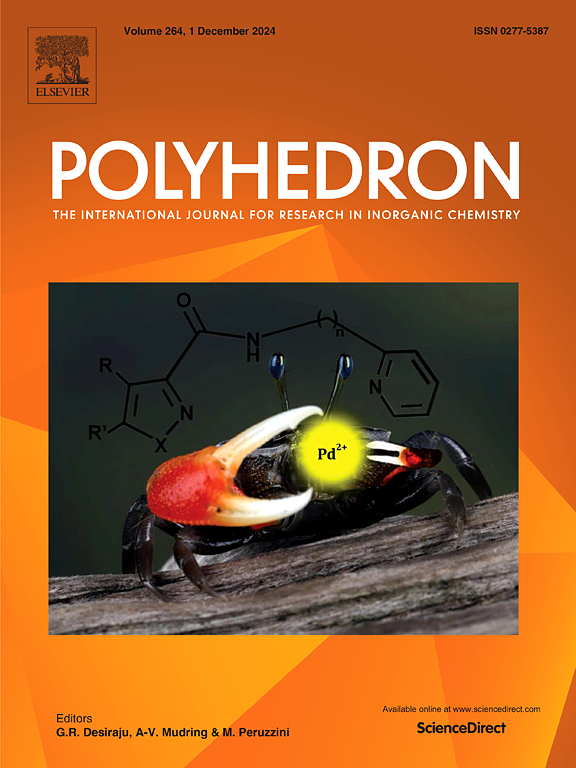Novel mixed-ligand metal complexes containing anisic acid/nicotinamide ligands. Their synthesis, structural characterization and biological applications
IF 2.4
3区 化学
Q2 CHEMISTRY, INORGANIC & NUCLEAR
引用次数: 0
Abstract
In this study, five different p-methoxybenzoate (anisate)-nicotinamide complex compounds, whose central atoms are transition metal cations (Mn2+, Co2+, Ni2+, Cu2+ and Zn2+), were synthesized and their structural characterizations were investigated. In addition, the antibacterial and antifungal properties of the compounds against various biological derivatives were investigated by disk diffusion method. Elemental analysis, magnetic susceptibility, FTIR spectra, thermoanalytical TG-DTG/DTA analysis and single crystal X-ray diffraction methods were used to determine the structural characterizations of the compounds. It was determined that the complexes containing Co2+ and Ni2+ cations, whose single crystal structures were solved, were isostructured. It was suggested that the coordination properties of the other three coordination compounds centered on Mn2+, Cu2+ and Zn2+ were like the solved structures because of the similarity of thermal and spectroscopic analysis results. Due to the nature of the metal cation, it was predicted that only the Cu2+ complex was in fivefold coordination and the coordination was completed with two anisate anions, two neutral nicotinamide ligands and one crystal water. It was determined that the other four complex structures were in sixfold coordination and that they completed their coordination with one more crystal water, unlike the Cu2+ complex. It was also seen that the complex with the Co2+ central atom contained two hydrate waters, unlike the other complexes. The presence of water molecules in the coordination compounds and the thermal decomposition steps of the structures were determined by TG/DTA curves.

求助全文
约1分钟内获得全文
求助全文
来源期刊

Polyhedron
化学-晶体学
CiteScore
4.90
自引率
7.70%
发文量
515
审稿时长
2 months
期刊介绍:
Polyhedron publishes original, fundamental, experimental and theoretical work of the highest quality in all the major areas of inorganic chemistry. This includes synthetic chemistry, coordination chemistry, organometallic chemistry, bioinorganic chemistry, and solid-state and materials chemistry.
Papers should be significant pieces of work, and all new compounds must be appropriately characterized. The inclusion of single-crystal X-ray structural data is strongly encouraged, but papers reporting only the X-ray structure determination of a single compound will usually not be considered. Papers on solid-state or materials chemistry will be expected to have a significant molecular chemistry component (such as the synthesis and characterization of the molecular precursors and/or a systematic study of the use of different precursors or reaction conditions) or demonstrate a cutting-edge application (for example inorganic materials for energy applications). Papers dealing only with stability constants are not considered.
 求助内容:
求助内容: 应助结果提醒方式:
应助结果提醒方式:


